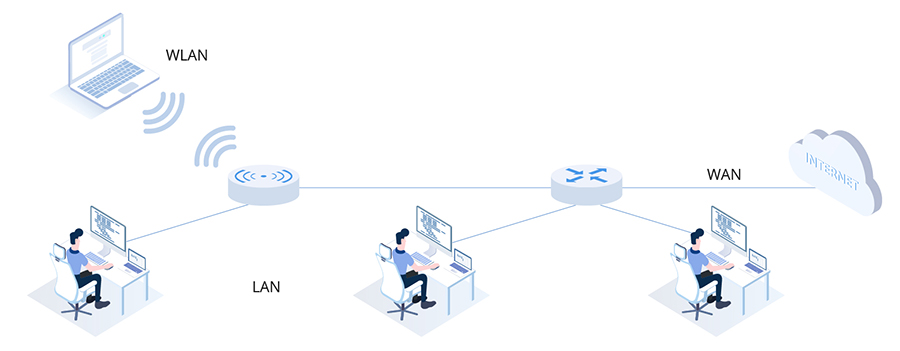In the rapid development of Industrial Internet of Things (IIoT), the wireless access point (AP) as a core component of wireless networks holds significant importance for traditional industries. This article delves into the various networking modes of wireless APs and provides unique strategic recommendations for their applications in traditional industries.
Standalone mode is the most basic application of wireless APs, suitable for small networks or personal users. In this mode, the wireless AP serves as an independent network device, providing wireless network access services without the need for other network equipment. Users can directly connect to the wireless AP through wireless devices to enjoy the convenience of wireless networks.
Centralized control mode is suitable for medium to large enterprises or organizations that need to manage a large number of wireless APs. In this mode, wireless APs are managed and configured centrally through a wireless controller, enabling unified scheduling and optimization of network resources. The wireless controller can monitor network status in real-time, automatically adjust channels and power, and improve network performance and stability.
Mesh mode is a way for wireless APs to connect with each other through wireless signals, suitable for scenarios requiring wide-area coverage or complex environments. In a Mesh network, wireless APs can communicate with each other, forming a self-organizing and self-repairing network structure. When a wireless AP fails or has poor signal, other wireless APs can automatically take over its work, ensuring network continuity and stability.
Bridge mode is used to connect wireless APs as bridges, connecting two or more wired networks. In bridge mode, the wireless AP converts wireless signals into wired signals, enabling data transmission between different networks. This mode is suitable for connecting wireless networks to existing wired networks, such as connections between remote office locations or areas with insufficient wireless network coverage.
In client mode, the wireless AP can be used as a wireless network card for terminal devices, connecting to other wireless networks. This mode is suitable for connecting wired devices to wireless networks or connecting terminal devices to remote networks.

For small network environments, such as home networks or small offices, wireless APs in standalone mode can be used for networking. The wireless AP can directly connect to the wired network, providing wireless network access services for terminal devices. At the same time, security measures such as access control and encryption can be set to ensure network security.
For medium to large enterprises or organizations, managing a large number of wireless APs to meet the needs of different regions and departments can be achieved through the centralized control mode of wireless APs. Centralized management and configuration of wireless APs through a wireless controller can simplify network management, improve network performance and stability. Additionally, dynamic allocation and optimization of network resources can be performed based on actual needs to meet the demands of different departments and regions.
In complex environments or scenarios requiring wide-area coverage, Mesh mode wireless APs can be used for networking. Through the interconnection and self-organizing capabilities of wireless APs, a more extensive and stable wireless network can be formed. This mode offers higher scalability and reliability, satisfying the needs of different environments and scenarios.
When wireless networks need to be connected to existing wired networks, bridge mode wireless APs can be used for networking. The wireless AP converts wireless signals into wired signals, enabling data transmission between different networks. This mode is suitable for connections between remote office locations or areas with insufficient wireless network coverage.
Under certain special requirements, such as connecting wired devices to wireless networks or connecting terminal devices to remote networks, client mode wireless APs can be used for networking. The wireless AP serves as a wireless network card for terminal devices, connecting to other wireless networks or remote networks. This mode offers higher flexibility and adaptability, meeting the needs of different special scenarios.
In summary, wireless APs offer various networking modes and application strategies that can be selected and applied based on actual needs. For traditional industries, understanding and mastering the networking modes and application strategies of wireless APs will help to better utilize wireless network technology to promote industrial upgrading and development.